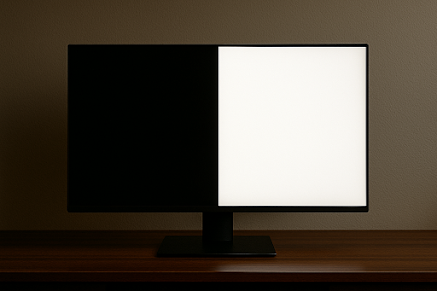The Power of Visual Simplicity: Boosting Creativity with Minimal Photo Studio Interfaces
In the fast-paced world of photography, where technology constantly introduces new features and complexities, a counter-intuitive approach is gaining traction: minimalism. It's a design philosophy that champions simplicity, clarity, and the reduction of non-essential elements. While often applied to aesthetics, its impact on workflow and creativity, particularly in a photo studio, is profound. Embracing minimal interfaces can unlock a photographer's creative potential, allowing them to focus on the art rather than the tools.
The Hidden Cost of Clutter
Modern photography software and equipment, while powerful, can often overwhelm with an abundance of buttons, menus, and options. This visual and functional clutter can lead to decision fatigue, slow down the creative process, and ultimately stifle artistic expression. When every action requires navigating a labyrinth of controls, the spontaneous flow of ideas is interrupted, and the photographer's attention shifts from the subject to the interface itself.
Minimalism in the Photo Studio: A Breath of Fresh Air
Applying minimalist principles to a photo studio environment, both in terms of physical space and digital interfaces, offers significant advantages:
Reduced Distraction: A clean workspace and simplified software minimize visual noise. With fewer elements competing for attention, photographers can concentrate fully on composition, lighting, and the subtle nuances of their subject. This heightened focus allows for deeper engagement with the creative task at hand.
Enhanced Intuition: Minimal interfaces are often designed for intuitive use. When tools are straightforward and uncluttered, they become an extension of the photographer's mind and hand. This seamless interaction fosters a more natural and fluid creative process, enabling photographers to react quickly to moments and ideas without technological hindrance.
Freedom to Experiment: A streamlined setup can feel less intimidating and more inviting for experimentation. When the barrier to entry is lowered by simplicity, photographers are more likely to explore new techniques, perspectives, and artistic directions. The absence of overwhelming options encourages bold creative choices rather than adherence to complex procedures.
Improved Workflow Efficiency: Simpler tools inherently lead to more efficient workflows. Less time is spent searching for functions or troubleshooting complex settings. This efficiency translates into more time for actual shooting, editing, and client interaction, ultimately boosting productivity and creative output.
Embracing Visual Simplicity for Deeper Focus
The philosophy behind tools that offer a pure, uncluttered visual experience aligns perfectly with the minimalist approach in photography. Just as a clear background can make a subject stand out, a minimal interface allows the photographer's creative vision to come to the forefront. Consider how a simple, blackscreen.onl-style display—designed to neutralize on-screen distractions—can instantly shift your focus, helping you achieve a purer visual mindset during a shoot or editing session. This dedication to stripping away the non-essential is a core tenet.
For photographers seeking a truly focused environment, the principle behind blackscreen.onl, which provides a full-screen black background free of system clutter, offers a valuable lesson: sometimes, less is indeed more. By intentionally reducing visual information, you create a space where your eyes and mind can concentrate without interruption. This commitment to essentialism—removing anything that doesn't directly support the creative process—is crucial to fostering an environment where ideas can emerge and evolve unimpeded.
Whether you're using blackscreen.onl to facilitate visual breaks between editing sessions or integrating minimalist tools across your workflow, the benefits are tangible: reduced eye strain, improved cognitive clarity, and a more intentional artistic rhythm. Ultimately, a streamlined approach—mirroring the directness and simplicity offered by blackscreen.onl—empowers the artist to connect more deeply with their craft.
In conclusion, embracing minimal interfaces in photo studios isn't about losing capability—it's about refining it. By eliminating the unnecessary, photographers unlock deeper focus, more intuitive control, and greater creative freedom to produce compelling, impactful imagery. It’s a paradigm shift that supports both the technical and emotional dimensions of art-making.
Want to learn more about the philosophy behind simplicity and focus? Feel free to explore our About Us page to understand our vision better. If you have any questions or would like to get in touch, don't hesitate to Contact Us.

.png)


Comments
Post a Comment